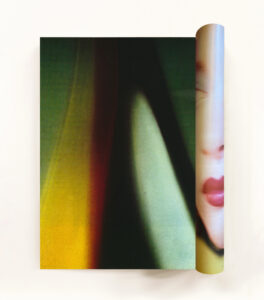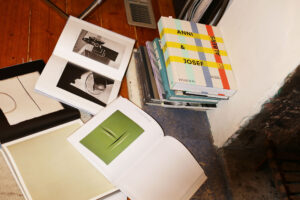Zoë Croggon on the Metamorphosis of the Image
The body has long been the focus of Zoë Croggon’s work. Working with sculpture, video, drawing and primarily collage, Zoë’s practice considers the relationship between the kinetic body and its surroundings, contemplating the role we play in our environment and how deeply our surroundings inform the cadence of our lives. Created primarily from found photographs, her works study texture, light, and form, examining the possibilities and limits of pictorial abstraction and metamorphosis.
This month, Naarm/Melbourne-based contemporary art gallery, Daine Singer will exhibit a new series of new works by Zoë Croggon in an expertly curated solo presentation at Melbourne Art Fair. Dedicated to facilitating a deep exploration of artistic practice, Melbourne Art Fair spoke with Zoë and gained insight into her artistic process.
Your use of collage involves bringing disparate elements from various sources together. How do you navigate the tension between preserving the original identity of individual images and creating a new conceptual whole?
I think it is a balancing act that ultimately has to be intuited. The work really depends on the brain’s propensity for pattern recognition; synthesising new information with old, amalgamating disparate pieces of data, or in my case, perceiving two distinct images severed from their referent and function as a coherent whole, even if just for a moment. In an interview with Michael Bracewell for Frieze, John Stezaker talks about the metamorphosis of the image in collage, “I’m very much a follower of Maurice Blanchot’s ideas when it comes to image and fascination; he sees it as a necessary series of deaths that the image has to go through in order to become visible and disconnected from its ordinary referent. I don’t know whether that’s an ideal, but I suppose it could be a guiding principle.”
Your works are largely concerned with the relationship between the kinetic body and its surroundings, contemplating how the built environment can inform the cadence of our lives. Can you expand on how this concept is explored in your work? Has it evolved throughout your career?
I suppose the work is asking how to be in the world, how to live in a body that occupies space. One of the reasons I love dance is because it is the language of the body in conversation with its environment. I’m interested in the shifts that occur physically and psychologically when our surroundings change, even slightly, like when a cloud obscures the light of the sun. It is the interconnectivity of things that compels me (and which I think always will), which is why my work often poises the human form and its built environment somewhat as equals, the body no longer occupying space and space no longer determining the body but each existing only in relation to the other, completed by the other.

Zoë Croggon, Seeing Darkly, 2023, collage of found images and glue on paper, Perspex frame, 47.6 x 36.7 x 7 cm framed.
When creating a new piece, how do you work through forming a composition? What is your process in deciding where to make a cut and where to piece it together to create something new?
It is quite intuitive and immediate, I tend to cut and compose until I feel like the images speak to each other, it is really a process of trial and error. The decisive “cut” in collage can feel violent at times, especially working so much with photographs of the body. I like working in collage because it is full of contradictions, it is a medium that is simultaneously constructive and destructive. Collage encompasses the violation of copyright, the destruction of an image and the severing of a pictorial body, all of which are countered by the creation of a new image, the preservation and resurrection of discarded material, and ultimately the search for harmony within division and fragmentation.
Incorporating images from sports encyclopedias, photography manuals, film stills, and dance catalogues, your collages span diverse subject matter. What is your selection process in sourcing these images?
I cast a pretty wide net, and although I have inclinations toward certain material (botanical photography and yoga manuals are favourites), I am often surprised at the beauty that can be found in books or magazines that I would generally ignore. I only source second hand printed material, which comes less from a persistent nostalgia and more from the fact that I wouldn’t know where to begin looking online, it feels both too nebulous and too specific. I try to be thorough, but I am happy for my work to be led by the material I find.


Photos courtesy the artist and Daine Singer (Naarm/Melbourne)
Your older works feature the athletic form – the dancer’s body often in juxtaposition with architectural features. There seems to be a slight shift in your new works which often feature editorial images from fashion magazines. Is this an intentional shift in the subject matter or do you view it as a natural evolution of your work?
I generally allow my source material to define my work and determine its aesthetic direction. During the lockdowns in Melbourne, when second hand bookshops and fine art printers were closed, I turned to the collections of magazines I had in my studio. I wanted to find a way to use the entire magazine as “the work” while playing with a sculptural three dimensionality. I was thinking about the relationship between content and process, wondering if there was a way I could imitate the lush smooth garments featured in these magazines in how I make the work – the pages are curled, folded and tucked, mimicking the textural pliancy of fabric. I wanted to pair formal symmetries within the magazine while heightening the surgically polished and disembodied female form.
Explore and collect Zoë Croggon’s works at Melbourne Art Fair, 22-25 February 2024 at the Melbourne Convention and Exhibition Centre. Secure your tickets here.


